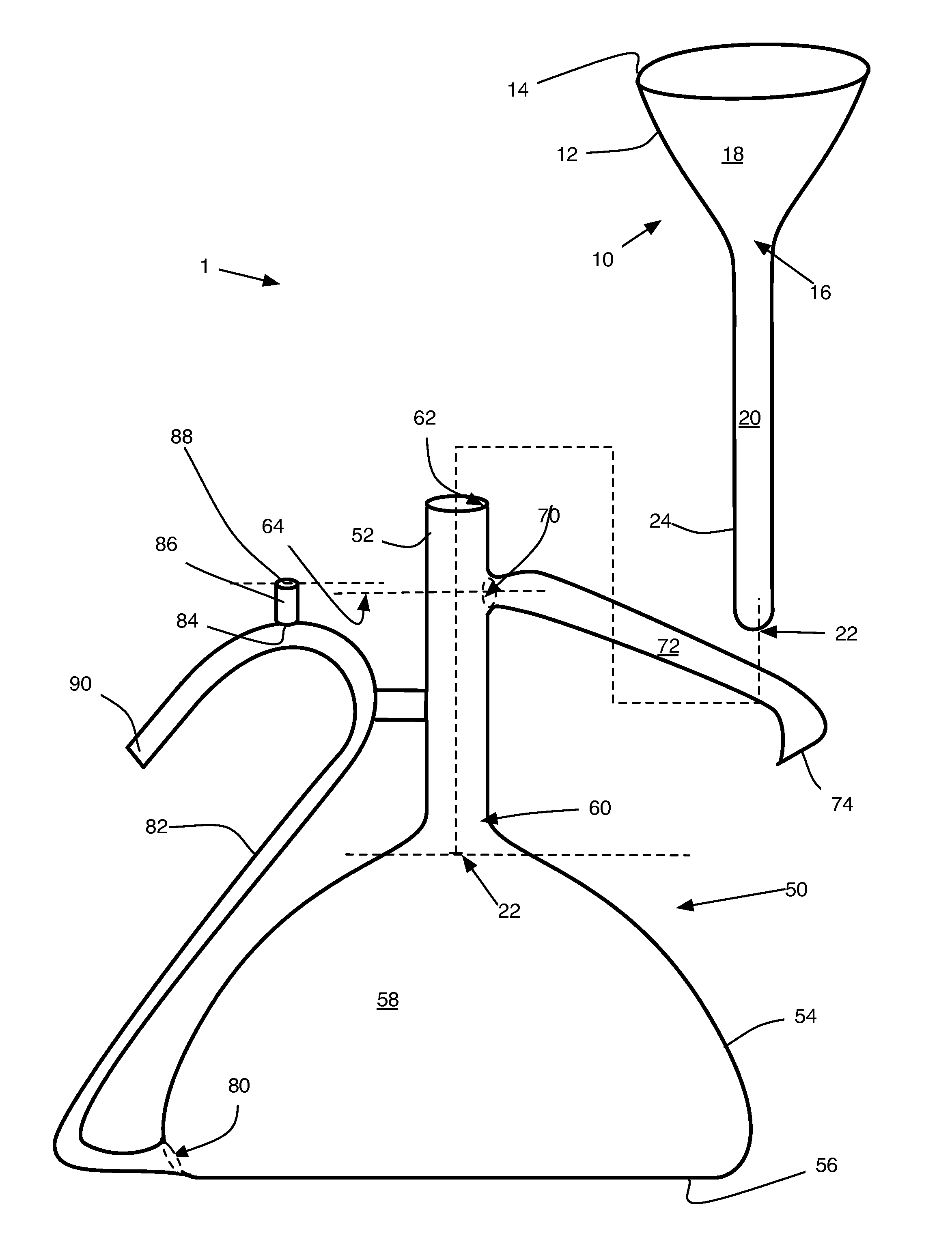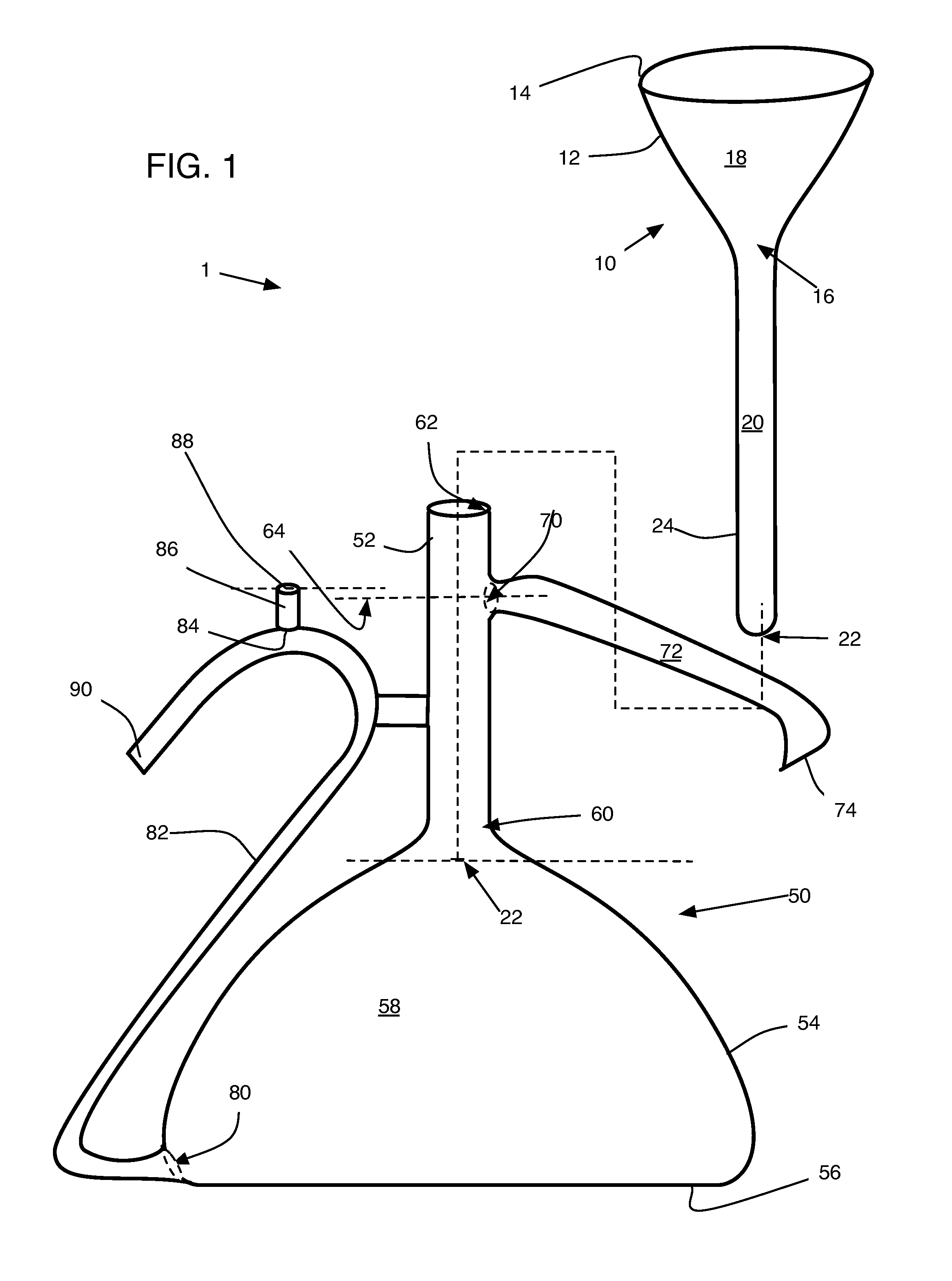Device for separation of essential oils and method of use
a technology of essential oil and device, applied in the direction of separation process, chemistry apparatus and process, liquid displacement, etc., can solve the problems of large amount of water heating cost and time needed for each distillation, oil will be ruined, and the quality of oil is poor
- Summary
- Abstract
- Description
- Claims
- Application Information
AI Technical Summary
Benefits of technology
Problems solved by technology
Method used
Image
Examples
Embodiment Construction
[0020]Possible embodiments will now be described with reference to the drawings and those skilled in the art will understand that alternative configurations and combinations of components may be substituted without subtracting from the invention. Also, in some figures certain components are omitted to more clearly illustrate the invention.
[0021]The preferred embodiment 1 of the present invention (an essencier) replaces both conventional separation devices as taught in the conventional art (such as a Florentine flask). The preferred embodiment includes two components: A funnel 10, and a collection vessel 50. The funnel includes a top funnel 12 (a tapered cylindrical shape with a larger open top 14 narrowing to a smaller open bottom 16 with one continuous sidewall 18 connecting and defining both the open top and open bottom. Extending from the bottom of the funnel, an elongated, narrow, downward directed stem portion 20 is in fluid connection with the funnel. This narrow stem is hollo...
PUM
| Property | Measurement | Unit |
|---|---|---|
| Diameter | aaaaa | aaaaa |
| Shape | aaaaa | aaaaa |
| Height | aaaaa | aaaaa |
Abstract
Description
Claims
Application Information
 Login to View More
Login to View More - R&D
- Intellectual Property
- Life Sciences
- Materials
- Tech Scout
- Unparalleled Data Quality
- Higher Quality Content
- 60% Fewer Hallucinations
Browse by: Latest US Patents, China's latest patents, Technical Efficacy Thesaurus, Application Domain, Technology Topic, Popular Technical Reports.
© 2025 PatSnap. All rights reserved.Legal|Privacy policy|Modern Slavery Act Transparency Statement|Sitemap|About US| Contact US: help@patsnap.com


